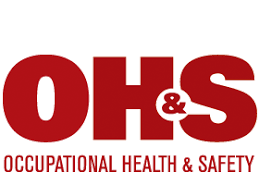Avoid Suspension Trauma with a Comprehensive Fall Protection Program: OH&S Magazine By Philip Jacklin
Jun 11, 2024
Fall protection and awareness of suspension trauma are essential for ensuring workplace safety, as proper equipment use and effective rescue plans can prevent injuries and save lives.
It’s an unfortunate fact that falls have been a leading cause of injury and death in the workplace, in construction and in general industries. Falls don’t just occur in the workplace though. Even if workers are off the clock and at home, each year roughly 500,000 Americans visit the emergency room after falling off or getting injured from a ladder. In the workplace, employers are legally required by the federal Occupational Safety and Health Administration (OSHA) to provide fall protection for employees who will work over four feet off the ground, or to their next lower level.
Fall protection equipment can be any device, apparatus, or other personal protective equipment (PPE) that aims to protect workers from falling off their walking working surface or the consequences of falling. Equipment like guardrails actively prevents people from falling. Furthermore, fall arrest equipment refers to the specific equipment that does not necessarily prevent a worker from falling but can successfully suspend the worker before hitting the ground below if manufacturer instructions are followed. These pieces of equipment could include—but are not limited to—body harnesses, lanyards or self-retracting lifelines (SRLs). However, once a worker’s fall is successfully arrested with their fall arrest equipment, one hazard is replaced by another. Remaining upright for too long and developing symptoms like low blood pressure is referred to as orthostatic intolerance. It plays a significant factor in developing suspension trauma, but its effects can be mitigated if workers are trained to recognize the signs and symptoms.
What is Suspension Trauma?
Suspension trauma is a life-threatening condition that occurs when the body responds to being in an upright position for a prolonged time with sweating, dizziness, nausea, heart palpitations or loss of consciousness among other symptoms. While fall protection equipment aims to prevent the almost certain debilitating or fatal results of falling from heights, the body still assumes some of the forces incurred from the fall. Shock-absorbing elements in lanyards or SRLs shoulder most of the burden, but the remaining shock suffered is distributed around the victim’s body and can cause a decrease in heart rate, blood pressure and cardiac output. This is a tricky hazard to mitigate because the effects of orthostatic intolerance will vary between workers, and it’s often difficult to determine the rate or intensity at which suspension trauma occurs.
Click here for the full article as published in Occupational Health & Safety Magazine



